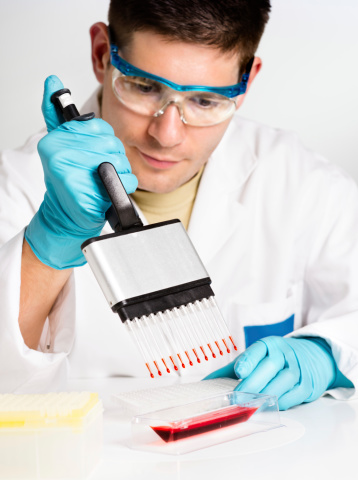Pavilion Publishing and Media Ltd
Blue Sky Offices Shoreham, 25 Cecil Pashley Way, Shoreham-by-Sea, West Sussex, BN43 5FF, UNITED KINGDOM
 Normal skin cells contain an unexpectedly large amount of cancer-associated DNA changes, according to research.
Normal skin cells contain an unexpectedly large amount of cancer-associated DNA changes, according to research.
The study, published in Science – and part-funded by Cancer Research UK – showed that cells in normal facial skin carried many thousands of changes to their DNA – known as mutations.
The mutations were of a type predominantly caused by exposure to sunlight. Around a quarter of the healthy cells they studied carried at least one cancer-associated mutation.
Dr Phil Jones, a Cancer Research UK expert in pre-cancer and author on the study, said: “It was quite astonishing to find so many genetic changes in cells in normal skin. It seems that, even though so many cells have DNA damaged by the sun’s UV rays, the skin keeps working as normal.”
The researchers used advanced DNA analysis technology on 234 biopsies taken from four patients aged between 55 and 73 who had variable histories of sun exposure.
They donated the samples following routine surgery to remove excess eyelid skin.
Their analysis revealed 3,760 different mutations across all 234 biospies, equivalent to more than 100 cancer-associated mutations per square centimetre of skin.
Some cells that carried these changes in their DNA formed clusters, known as clones. And while some clones had grown to be around twice the size of normal groups of cells, none of them had become cancerous.
“These first cancer-associated mutations give cells a boost compared to their normal neighbours,” explained study author Dr Peter Campbell.
“They have a burst of growth that increases the pool of cells waiting for the next mutation to push them even further. We can even see some cells in normal skin that have taken two or three such steps towards cancer. How many of these steps are needed to become fully cancerous? Maybe five, maybe 10, we don’t know yet.”
The researchers believe the study offers important insight into the first steps a cell takes to become cancerous. And further research will be needed to define what exactly pushes these cells over the edge.
“What we are seeing here are the hidden depths of the iceberg, not just the relatively small number that break through the surface waters to become cancer,” said study author Dr Inigo Martincorena.
The DNA changes followed patterns often seen in a form of skin cancer called squamous cell carcinoma – the most common and treatable form – linked to exposure to the sun. It accounts for about 20 per cent of skin cancers.
Cancer Research UK’s health information manager, Sarah Williams, stressed that these new findings reinforce the need to stay safe in the sun.
“Although we all need some sun, people can avoid sunburn and skin damage when the sun is strong by spending time in the shade, covering up with clothing and using plenty of sunscreen with at least SPF15 and 4 or more stars,” she said.
The Sanger Institute team is now planning further research with larger sample numbers and a broader range of tissues. They hope to better understand how healthy cells turn into cancerous cells.
“We now need to understand what might, in some people, push these cells over the edge towards becoming a skin cancer. This will be vital for finding new ways to intervene earlier, and potentially stop these cancers from developing,” said Dr Jones.


